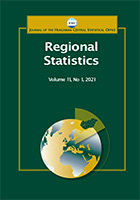
ARBITRAL SETTLEMENT OF DISPUTES IN PROVINCES IN SHADOW OF THE ROMAN PROVINCIAL ADMINISTRATION
ARBITRAL SETTLEMENT OF DISPUTES IN PROVINCES IN SHADOW OF THE ROMAN PROVINCIAL ADMINISTRATION
Keywords: Roman provinces; administration; arbitration; disputes; boundary; Romanisation; criminal jurisdiction
There are many records throughout the Empire from the imperial provinces dating to 1st and 2nd century AD that mention dispute settlements between tribal communities in which the Roman provincial administration had significant role. The intention of the Romans to intervene to such disputes was not so much motivated by the need to ordain how the dispute should be settled, but to ensure all the prerequisites that the dispute was ended quickly and efficiently. Romans intervened to all disputes that they perceived as potential dangers to their smooth administration of the province. The more dangerous the dispute was the higher provincial official was concerned with its settlement. Such approach to dispute settlements resulted with a high degree of standardisation of such procedures throughout the Empire which can be qualified as some kind of administrative arbitrations. Moreover, such approach reflected a consistent policy to disputes in those provinces where stabilisation of Roman government was still going on, or where tribal communities did still not fully adapt to the new Roman administrative system and territorial divisions. In their attempts to bring such disputes to an end, the Roman provincial magistrates used certain powers which were typical for their criminal jurisdiction, especially in initiating the dispute settlement and the enforcement of the award.
More...
